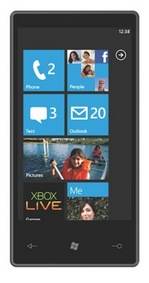The Windows Phone 7 news kind of threw us a bit this week. It had almost no mention about how it would serve the enterprise. It almost seemed like Microsoft had given up.

Now we are starting to see some reports about how Windows Phone 7 would fit for the mobile enterprise. And it makes us wonder. Will the Windows Phone 7 better serve the enterprise than the iPhone?
The Blackberry is the leader in the market. For our purposes, we are looking at how the challengers compare to each other. Android may become the biggest rival to the Blackberry with its tight integration into Google’s enterprise suite and the ability to use multiple applications at the same time.
I’s the iPhone that looks a bit vulnerable. Without a doubt, the iPhone is showing success in the enterprise. Apple had a robust earnings report for the fourth quarter thanks in good part to sales of the iPhone to people who use it for work.
But here’s the catch. We really have not seen any bona fide use of mobile collaboration tools as of yet across any device. People are using smartphones to check messages and use applications. The applications they do use are services like Twitter.
When mobile collaboration does find its place in the market, it’s not going to be a one application world. It will require the ability to mashup data, pulling information from multiple sources. Our daily work requires us to use multiple applications simultaneously. That’s not possible with the iPhone. And it will not be possible with the iPad. This issue will become even more pronounced as more enterprise applications enter the mobile market.
In comparison, Windows Phone 7 is an information centric device. Information is stored in hubs and you can view the different hubs as a panorama on the device screen. That makes it potentially better than the iPhone or the Nexus One, which do not have that capability.
People want to see the information without having to go from application to application. A panorama is more akin to the experience we get on a device like a laptop. That’s far more suitable for the enterprise.
“Out of the box, this information is organized into areas called hubs, which follow the user’s areas of interest. Accessible through live tiles in the home screen, the Me (the user), people, pictures and video, music, and games–plus the omnipresent search–hubs give views into several data sources, connecting and presenting them into an interweaved panoramic stream. These hubs dig heavily into many databases, both locally and into the cloud.”
Ironically, Microsoft often get labeled as a company that creates silo environments. From our view, the mobile applications of today have a certain silo effect. Windows Phone 7 and its hub structure means that it can draw from deep databases from on-premise and the cloud. That to us seems like a powerful combination that is well suited to an enterprise world.









